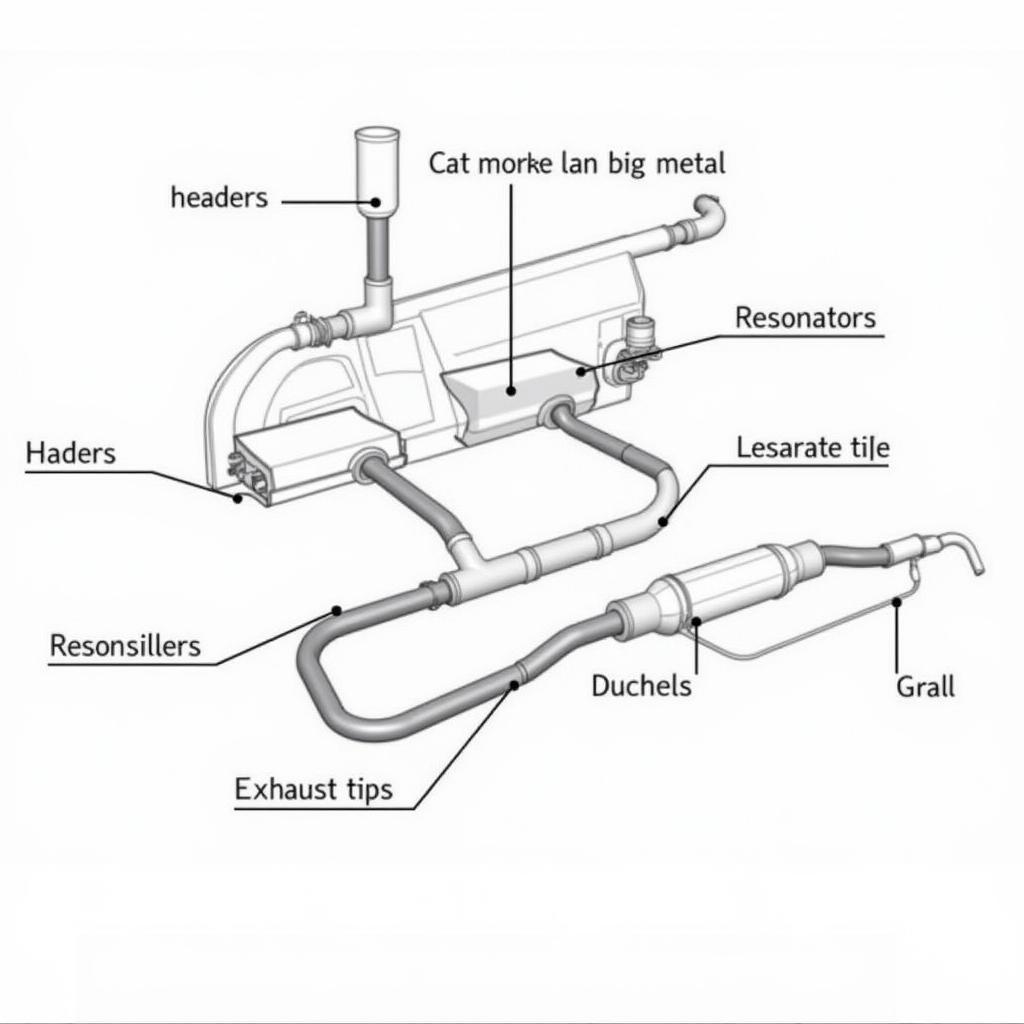The BMW E92 M3’s sound is iconic. This guide delves into the nuances of the E92 M3’s distinct auditory profile, covering everything from the stock exhaust note to modifications, common issues, and diagnostic techniques.
The roar of a BMW E92 M3 is more than just noise; it’s an expression of the car’s high-performance nature. From the throaty growl at low RPMs to the high-pitched scream at the redline, the E92 M3’s sound is a key part of its character. This sound is meticulously engineered, a product of carefully designed exhaust systems, intake manifolds, and engine components. Understanding the components that contribute to this symphony and how to maintain or enhance it is essential for any E92 M3 enthusiast. Whether you’re looking to maintain the original sound, troubleshoot an issue, or explore modifications, this comprehensive guide will equip you with the necessary knowledge.
Decoding the Stock BMW E92 M3 Sound
The stock E92 M3 exhaust system is designed to deliver a balance of performance and a refined sound. It features a complex network of pipes, mufflers, and resonators that work together to sculpt the exhaust gases’ flow and the resulting sound. This creates a sound that is both aggressive and sophisticated, distinguishing it from lesser models. Understanding the intricacies of this system is crucial for diagnosing potential problems and deciding on modifications.
What gives the stock E92 M3 its characteristic sound? The naturally aspirated V8 engine, specifically the S65, is the heart of the matter. This high-revving engine produces a distinctive sound that sets it apart from turbocharged or supercharged engines. The engine’s unique firing order and the design of the exhaust system contribute significantly to the distinct auditory signature.
 BMW E92 M3 Stock Exhaust System Diagram
BMW E92 M3 Stock Exhaust System Diagram
Common E92 M3 Sound Issues
While the E92 M3’s sound is typically a source of enjoyment, several issues can disrupt its harmony. One common problem is exhaust leaks. These leaks can occur at various points in the system, from the headers to the exhaust tips. They can result in a louder, raspier, and less refined sound, often accompanied by a decrease in performance.
Another potential issue is a malfunctioning exhaust valve actuator. The E92 M3’s exhaust system incorporates valves that can open and close to modulate the sound and backpressure. A faulty actuator can lead to the valves being stuck open or closed, altering the exhaust note and potentially affecting performance.
Enhancing the E92 M3 Sound: Exhaust Modifications
Many E92 M3 owners seek to amplify or refine their car’s already impressive sound through exhaust modifications. Aftermarket exhaust systems offer a range of options, from cat-back systems to full headers and everything in between. These systems can alter the sound in various ways, making it deeper, louder, or more aggressive.
Choosing the right exhaust system depends on your personal preferences and desired sound. Some popular options include axle-back systems, which replace the mufflers and exhaust tips, and cat-back systems, which replace the entire exhaust system from the catalytic converters back. It’s important to consider the potential impact on performance and emissions regulations when selecting an aftermarket exhaust.
Diagnosing E92 M3 Sound Problems
Diagnosing sound-related issues with your E92 M3 requires a systematic approach. Start by carefully listening to the sound and identifying any unusual noises, such as rasping, hissing, or droning. Pinpointing the location of the sound can help narrow down the potential causes.
Visual inspection is also crucial. Look for any signs of damage or leaks in the exhaust system, such as cracks, rust, or loose connections. If you suspect a problem with the exhaust valve actuator, you can test its functionality using diagnostic software.
Similar to [bmw e92 m3 individual audio system], diagnosing problems requires a keen ear and attention to detail. For more information about exhaust systems, you might find [bmw m3 e92 sound exhaust] helpful. Understanding your car’s sound system can also be useful; see [bmw e92 sound system] for details. You can also find more general information about the M3 sound on [sound bmw m3]. If you are looking for information on the premium sound system available on certain models, you can refer to [2013 bmw e92 m3 preium sound system].
Conclusion
The BMW E92 M3’s sound is an integral part of its driving experience. Understanding its complexities, maintaining its health, and exploring modification options are crucial for any enthusiast. By addressing potential problems promptly and making informed choices about modifications, you can ensure that your E92 M3 continues to deliver its iconic sound for years to come.
FAQ
- What causes the distinct sound of the E92 M3? The S65 V8 engine, combined with the specifically designed exhaust system, creates the unique sound.
- How can I diagnose an exhaust leak? Listen for unusual noises, inspect the system visually, and consider professional diagnostics.
- What are the benefits of aftermarket exhaust systems? They can enhance the sound, potentially improve performance, and customize the car’s appearance.
- Are there any downsides to exhaust modifications? Some modifications can affect emissions compliance and may not be street legal in all jurisdictions.
- How can I maintain the stock exhaust system? Regular inspections and addressing any issues promptly can help preserve the system’s longevity.
- What are some common signs of exhaust problems? Rasping, hissing, droning, or changes in the exhaust note can indicate potential issues.
- Where can I find more information about E92 M3 sound? Online forums, enthusiast communities, and specialized websites offer valuable resources.
Need assistance with your BMW E92 M3 sound? Contact us via WhatsApp: +1 (641) 206-8880, Email: CARDIAGTECH[email protected] or visit us at 276 Reock St, City of Orange, NJ 07050, United States. Our 24/7 customer support team is ready to help.
